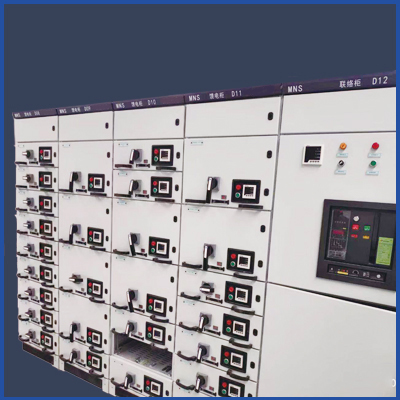弯工艺是钣金机箱机柜加工工序之一,钣金件折弯的精密度是怎么计算的呢?什么是弯曲件?
Bending process is one of the processing procedures of sheet metal cabinet. How to calculate the bending precision of sheet metal parts? What is a curved part?
由于在我们的生产生活当中,很多产品和设备都不是单一的直线条形设计,于是就需要具有一定弧度的结构进行连接。弯曲工艺初是被应用于板式的加工,是板式加工中的一种基本形式。而弯曲件就是板式弯曲结构工艺中的零件,每一个基本的加工零件,不管体型和形状差异,统称为弯曲件。
Because in our production and life, many products and equipment are not a single linear strip design, so we need a certain radian structure for connection. Bending process was originally applied to plate processing, which is a basic form of plate processing. The bending part is the part in the plate bending structure process. Every basic processed part, regardless of the shape and shape difference, is collectively referred to as the bending part.
对于钣金折弯结构加工工艺来说,其很多构成都有相应的算法来进行比例的设计和要求,就如同上文提到的工艺孔、工艺槽和缺口。除此之外,钣金折弯结构工艺还对很多方面有相关的算法要求。钣金折弯结构工艺重要的就是对钣金材料的弯边进行加工,而一般来说,钣金材料的弯边通常有道弯边,第二道弯边,和第三道弯边。
For the processing technology of sheet metal bending structure, many of its components have corresponding algorithms to carry out the proportion design and requirements, just like the process holes, process grooves and gaps mentioned above. In addition, the process of sheet metal bending structure also has relevant algorithm requirements in many aspects. The most important process of sheet metal bending structure is to process the bending edge of sheet metal material. Generally speaking, the bending edge of sheet metal material usually has the first bending edge, the second bending edge and the third bending edge.

不同弯边结构的钣金折弯加工都有不同的算法来进行设定要求,并且弯边与槽口还有着很密切的联系。以道弯边为基础,往后的一道或多道弯边的弯曲率都与其相关,受其影响。而道弯边的小高度,一般要大于等于槽口宽度与两倍的折弯角度的比值,如果比例不恰当,就会造成弯边的变形或弯边的曲率不足,直接影响工件的加工,造成加工的失败。当严格按比例设定加工了道弯边后,第二道弯边的高度要比道弯边的高度要高,第二道弯边的刃口尺寸也要比道湾边大,并且两道弯边的角度不能大于45 度,而第三道弯边的高度也要比第二道弯边要高。所以弯边的加工是一项复杂的工作,弯边的数量越多,对操作的要求也越高,一旦有一道弯边不符合比例设定,那么工件的完整性就会被破坏。折弯的弯曲半径也有相应的数据要求,弯曲半径越小,工件所受的拉力越大,如果弯曲半径的比例不正确,加工出的零件就不能有很好的稳定性。通常来说,钣金材料厚度为0.4毫米的,其小弯曲半径为8 到10 毫米;钣金厚度为0.5毫米的,其小弯曲半径为15 到20 毫米;钣金厚度为0.6 毫米的,其小弯曲半径为25 到30 毫米;钣金厚度为一毫米的,其小弯曲半径为45 到50 毫米;而钣金厚度为1.5 毫米的,其小弯曲半径为55 到60 毫米。对于折弯的部分,如果在其弯曲线附近有孔时,设计要求需要保证孔在弯曲变形区域之外,防止弯曲过程中孔发生变形。孔边线到弯曲半径中心的距离有如下要求,当孔为圆形时,如果钣金材料厚度。
Sheet metal bending with different edge bending structures has different algorithms to set the requirements, and the edge bending is closely related to the notch. Based on the first bend, the bending rate of one or more subsequent bends is related to and affected by it. The minimum height of the first bend is generally greater than or equal to the ratio of the notch width to twice the bending angle. If the ratio is inappropriate, it will cause the deformation of the bend or insufficient curvature of the bend, which will directly affect the processing of the workpiece and cause the failure of processing. When the first bend is processed in strict proportion, the height of the second bend is higher than that of the first bend, the blade size of the second bend is also larger than that of the first bend, and the angle of the two bends cannot be greater than 45 degrees, while the height of the third bend is also higher than that of the second bend. The more complicated the bending operation is, the higher the number of bending edges will be. The bending radius of bending also has corresponding data requirements. The smaller the bending radius, the greater the tensile force on the workpiece. If the proportion of bending radius is incorrect, the processed parts cannot have good stability. Generally speaking, the minimum bending radius of sheet metal material with a thickness of 0.4 mm is 8 to 10 mm; For sheet metal thickness of 0.5mm, the minimum bending radius is 15 to 20mm; For sheet metal with thickness of 0.6 mm, the minimum bending radius is 25 to 30 mm; If the sheet metal thickness is 1mm, the minimum bending radius is 45 to 50mm; For sheet metal with a thickness of 1.5mm, the minimum bending radius is 55 to 60mm. For the bent part, if there is a hole near the bending curve, the design requirements need to ensure that the hole is outside the bending deformation area to prevent the hole from deformation during the bending process. The distance from the hole edge line to the center of the bending radius has the following requirements. When the hole is circular, if the thickness of the sheet metal material.
小于2 毫米,那么圆孔到弯曲半径中心的距离应该大于其钣金厚度;如果钣金材料厚度大于2 毫米,那么孔与弯曲半径中心距离应该大于钣金材料厚度的两倍。当孔为方形时,根据其相关的测量数据,孔的每一边长应该大于2.5 到3 倍的板材厚度,才能保证孔不会变形。为了使钣金折弯加工的零件成角美观,成角工艺口的设计也有相关的数据要求。如钣金材料厚度为1 到1.2 毫米的,一般不需要工艺口来进行装饰;而钣金厚度为1.5 毫米的,一般成角工艺口直径为3.2 毫米;钣金厚度为2 到2.5 毫米的,一般成角工艺口直径为3.5毫米;钣金厚度为三毫米的,成角工艺口的直径为4.8 毫米。
If it is less than 2mm, the distance from the circular hole to the center of the bending radius should be greater than its sheet metal thickness; If the thickness of the sheet metal material is greater than 2mm, the distance between the hole and the center of the bending radius should be greater than twice the thickness of the sheet metal material. When the hole is square, according to the relevant measurement data, the length of each side of the hole should be greater than 2.5 to 3 times the plate thickness to ensure that the hole will not deform. In order to make the angled parts of sheet metal bending beautiful, the design of angled process port also has relevant data requirements. For example, if the thickness of sheet metal material is 1 to 1.2mm, the process port is generally not required for decoration; For sheet metal with a thickness of 1.5mm, the diameter of the corner forming process port is generally 3.2mm; For sheet metal with a thickness of 2 to 2.5mm, the diameter of the chamfering process port is generally 3.5mm; If the thickness of the sheet metal is 3mm, the diameter of the angled process port is 4.8mm.
钣金的弯曲结构加工工艺是钣金加工工艺中的一个难点,其加工有很多的数据要求,并且对设备的要求也极高。但是钣金的弯曲结构加工所得到的弧形工件,在我们的日常生活中应用广泛,有很大的市场需求量。所以,我们要提高对钣金的弯曲加工工艺的重视,增加其产品设计的工艺性,对模具也要不断的进行更新,在降低成本的同时也要保证工件的质量。要不断对这项技术进行探索,引入先进的理念,为了钣金加工工艺在我国能得到更好的发展而努力。
The bending structure processing technology of sheet metal is a difficult point in the sheet metal processing technology. Its processing has a lot of data requirements, and the requirements for equipment are also very high. However, the curved workpiece obtained from the bending structure processing of sheet metal is widely used in our daily life and has a great market demand. Therefore, we should pay more attention to the bending process of sheet metal, increase the manufacturability of its product design, constantly update the mold, and ensure the quality of the workpiece while reducing the cost. We should constantly explore this technology, introduce advanced ideas, and strive for the better development of sheet metal processing technology in China.
